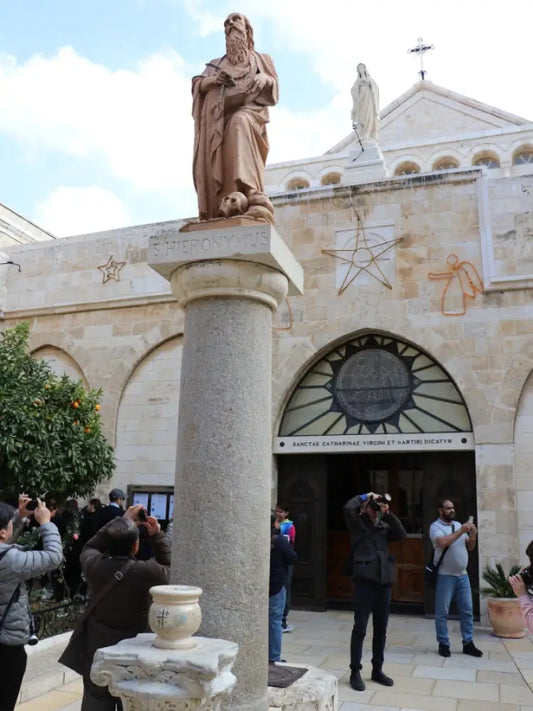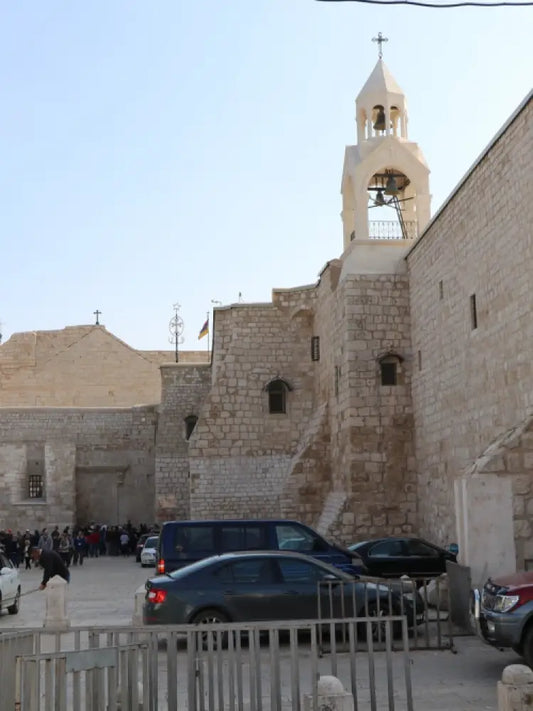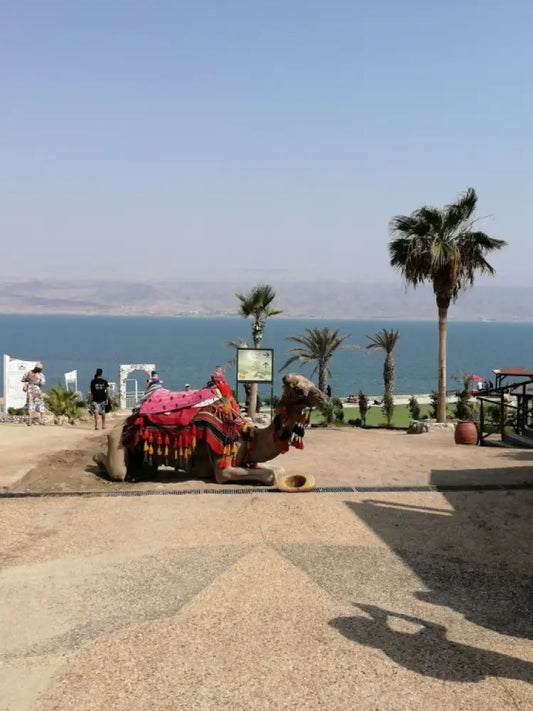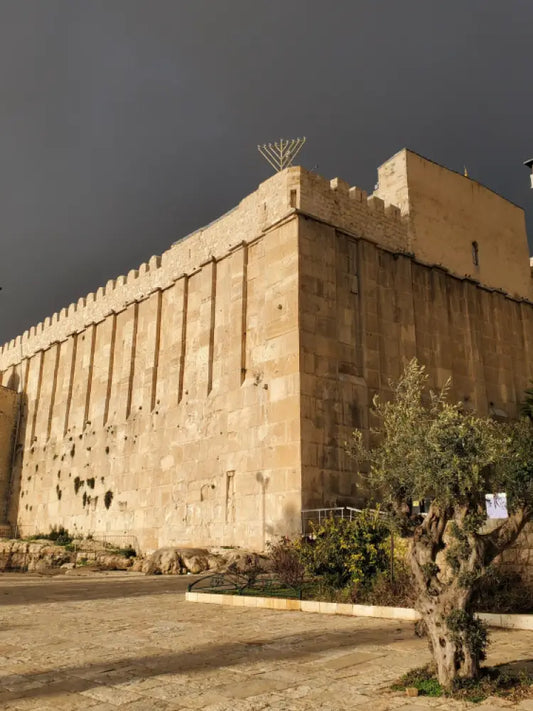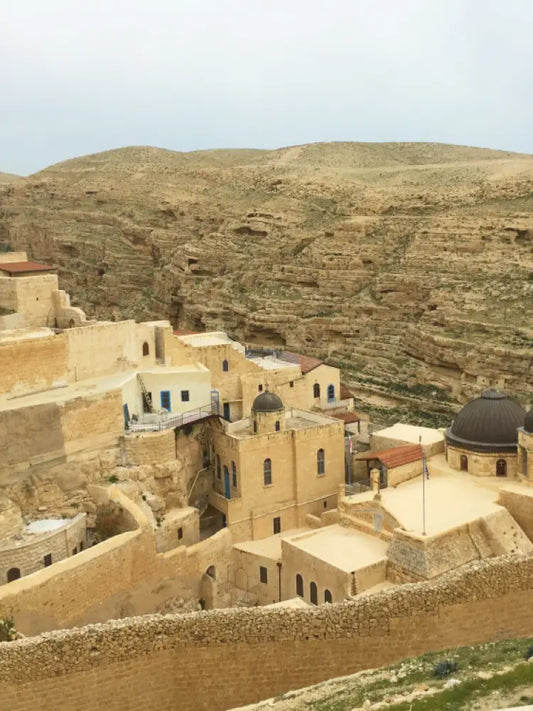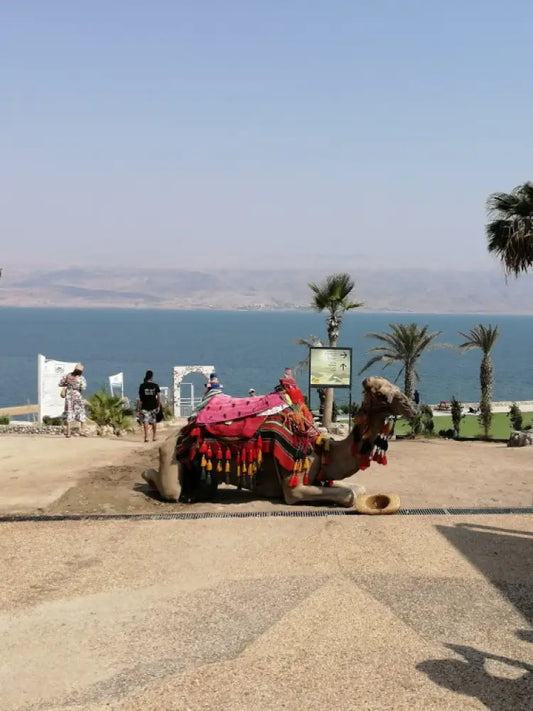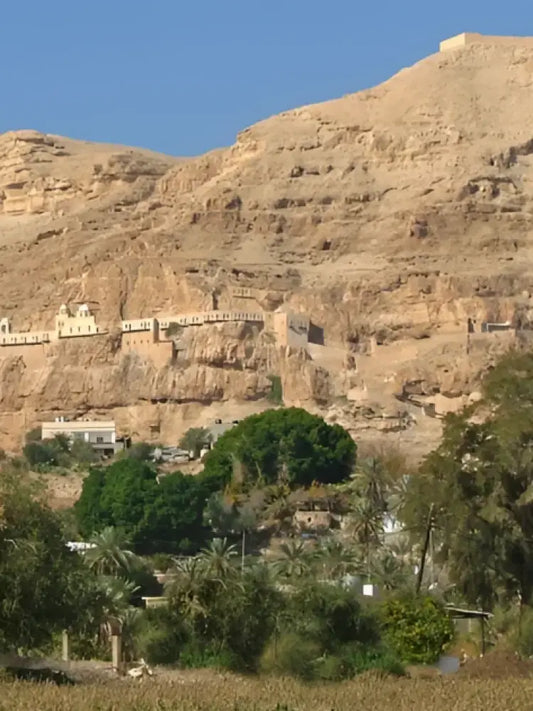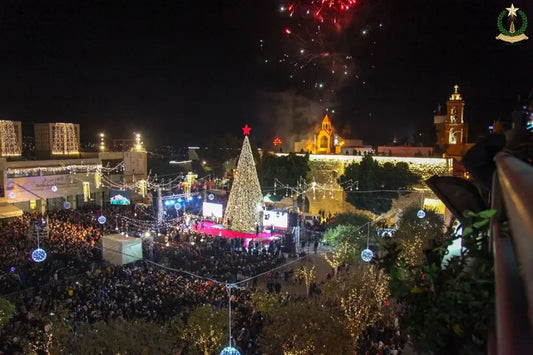Discover the Sacred Serenity of Shepherds Field in Beit Sahour: A Journey Through Time and Faith

Share
Introduction to Shepherds Field, Beit Sahour
There’s this quiet little spot just outside of Bethlehem, kind of tucked away where the hills roll softly and olive trees stretch out like old friends. Folks around here call it Shepherds Field, and if you ever visit, you’ll understand why it feels... different. Not flashy. Not polished. Just peaceful. Sacred, even .
Legend says this is where the angels came down that night, the night everything changed. No trumpets. No palaces. Just a bunch of tired shepherds watching over their sheep. And suddenly, light, voices, heaven breaking into earth. It still gives me chills thinking about it.
The town it sits in Beit Sahour carries that same kind of quiet strength. The people? Welcoming in a way that feels rare these days. They’re mostly Christian families who’ve been here for generations, holding on to their roots with both hands. You’ll see crosses hanging from rearview mirrors, smell fresh bread in the morning, and probably leave with more stories than you planned on.
Shepherds Field isn’t just a place you see. It’s something you feel. Something that reminds you faith isn’t always loud. Sometimes, it whispers through the wind, through a shepherd’s path, or a patch of land that holds a memory the world refuses to forget.
Table of Contents
- Introduction to Shepherds Field, Beit Sahour
- Biblical Importance of Shepherds Field
- The Town of Beit Sahour
- Geography and Scenic Beauty
- Archaeological Discoveries at Shepherds Field
- Key Religious Sites Within Shepherds Field
- Pilgrimage and Religious Celebrations
- The Franciscan Custody of the Holy Land
- Artistic Depictions and Symbolism
- How to Visit Shepherds Field
- Visitor Facilities and Amenities
- Insights from Locals and Tourists
- Interfaith Significance of Shepherds Field
- Educational and Cultural Programs
- Conservation and Preservation Efforts
- Frequently Asked Questions
- Conclusion: A Spiritual Journey
Biblical Importance of Shepherds Field
If you’ve ever cracked open the Gospel of Luke around Christmas time, you’ve probably read the part Luke 2:8–20 where angels appear to shepherds in a field at night. That field? Many believe it was right here in Beit Sahour. Just outside Bethlehem, quiet and starlit, it became the stage for one of the most beautiful surprises in all of Scripture.
What’s so powerful about that moment is who the angels chose. Not priests. Not kings. Just shepherds ordinary folks doing a night shift, looking after their sheep. And yet, they became the very first humans to hear the news of Jesus’ birth. Heaven didn’t just speak it sang. Right there in the stillness.
And people haven’t stopped coming since.
For generations, Christians have made their way to this spot, walking where those shepherds once stood, wondering what it must’ve felt like to hear the sky come alive. There’s something sacred in the simplicity. Something beautiful in knowing that God’s most important message was delivered under the open sky, to those the world often overlooks.
The Town of Beit Sahour
You might not have heard of Beit Sahour before, but if you ever end up near Bethlehem, don’t skip it. The name itself means “House of the Night Watch” which, once you know the story of the shepherds in the Gospel of Luke, kinda gives you goosebumps.
It’s a small town, just a stone’s throw east of Bethlehem, and it's where a lot of Christian families have lived for generations. Not tourists. Not newcomers. Locals. Real people who’ve carried their faith and traditions through years of uncertainty, and still open their doors with a smile.
Walking through Beit Sahour, you’ll pass old stone churches, tiny family bakeries, olive wood carvers tapping away in front of their shops, and cafés that smell like cardamom and fresh bread. It’s not polished for show it's real life. You feel that as soon as you sit down for tea with someone’s grandmother who insists you try the homemade sweets.
But it’s not just about food and crafts. The people here are the reason Shepherds Field is still so loved and looked after. They’re not just caretakers of a biblical site they’re living pieces of the story. You get this mix of holy and ordinary all in one place. A kid might be kicking a soccer ball near a centuries-old cave where shepherds once heard angels. That’s Beit Sahour.
Geography and Scenic Beauty
First thing you notice when you get to Shepherds Field? It’s quiet. Like, really quiet. Not in a creepy way, more like the earth itself is just resting. The hills kinda roll softly, like a big old blanket tossed over the land. Nothing dramatic. Just calm.
There’s olive trees everywhere. Some look older than anything I’ve ever seen. The trunks twist in weird ways, gnarled up but still alive and standing strong. You’ll spot wildflowers too, depending on the season I guess. I went in spring once and they were everywhere. Purple ones. Tiny yellow ones. Didn’t even know half their names.
It’s not fancy. That’s the thing. It’s simple but it hits you in the chest a little, especially if you’ve got anything weighing on your mind. People say it’s perfect for prayer or just thinking. I think they’re right.
If you're lucky enough to be there when the sun's coming up or dropping down? That’s the good stuff. The light turns gold and everything like literally everything starts to glow. Even the rocks look kinda holy. I remember standing there one evening, camera in hand, and forgetting to even take a photo. Just stared. Felt like time slowed down or paused or something.
It’s not just a view. It’s a feeling.
Archaeological Discoveries at Shepherds Field
So here’s where things get even more interesting. It’s not just stories and songs actual archaeological digs have taken place all around Shepherds Field. Like, real excavations. And yep, they’ve found stuff. Old tools, caves, bits of pottery, and those big underground things -I think they’re called cisterns? Basically, where they stored water and grain and all that.
Some of the caves they uncovered? They’re believed to be the same kind of places shepherds would've used back in the first century, which is wild to even think about. You walk into one and it’s... dark, cool, quiet. It almost feels like someone just stepped out for a second and might walk back in at any moment. Gives you a weird kind of chill, but not in a bad way.
There’s also signs that small nomadic shepherd communities lived around here. Not like cities, more like simple little set-ups. Just enough to survive, keep sheep fed, keep warm at night. Some grain silos were discovered too, which kinda proves people weren’t just passing through - they were staying for a while.
It’s not a museum, though. You don’t see glass displays or velvet ropes. It’s just there - open caves and stone remnants scattered around the field. Which, honestly, makes it even better.
You don’t just read the Bible here. You almost walk into it.
Key Religious Sites Within Shepherds Field
If you're ever wandering around Shepherds Field, one thing you really can’t miss is the little chapel they’ve built there - the Chapel of the Shepherds. It’s not huge or flashy, but that’s kinda the point. It’s shaped like a tent, kind of this tribute to the life of actual shepherds. Honestly, first time I saw it, I wasn’t sure what to expect... but then you step inside and boom - it hits you.
The walls are painted with these beautiful frescoes, showing the angels coming down, the shepherds all startled and awe-struck. It’s quiet in there. Almost too quiet at times. But it works. Like the whole place is paused in the moment from Luke 2.
Just a short walk down, there’s this rock-cut cave called the Grotto of the Shepherds. Not some touristy display - it feels really old. Like... ancient. There’s rough altars carved right into the stone, and it’s beleived early Christians actually used the space for worship. Makes sense. You can picture them huddled in there, praying by candlelight or something. Gives you a weird mix of chills and peace.
The Franciscans - yeah, the ones from the Custody of the Holy Land they’re the ones who take care of the site now. Have been for years. Without them, honestly, not sure what shape this place would be in today. They don’t just maintain it either... they treat it like something sacred, which it really is.
Pilgrimage and Religious Celebrations
Every year - especially once December rolls in - Shepherds Field turns into something truly special. Pilgrims start arriving from, well, everywhere. Groups from Europe, locals from nearby towns, people flying in from the States or South America, even folks who just happened to be traveling and felt like they had to come. It’s kinda amazing how many come through here.
During Christmas, the field just feels alive. There's Mass under the stars, choirs singing those same hymns you’ve heard since you were a kid, and candlelight processions that wind slowly through the land like glowing rivers. You don't even have to be religious to feel something stirring in your chest.
One of my favorite things? The Nativity reenactments. Yeah, I know - sounds like a tourist gimmick, but it’s not. There’s kids wrapped in robes playing Mary and Joseph, someone brings a donkey, and for a few moments, it’s like the first Christmas comes back to life. No flashing lights or big stages. Just simple, honest storytelling. You can see people tearing up. Happens every time.
And the prayers… they’re not rushed. People actually stop, kneel, sit on the rocks, whatever feels right. And they pray together. Out loud. In all these different languages. But somehow it just works. It all echoes across the hills, and you sorta understand what it might’ve felt like to be a shepherd, just... listening.
The Franciscan Custody of the Holy Land
You’ll find the Franciscans here too- no surprise really, since they’ve been looking after a ton of holy sites all over Israel and Palestine for centuries now. And they’re not just caretakers in name. These guys take it seriously. Like, really seriously. The paths are clean, the chapel's always looked after, and even the wild areas somehow feel... watched over? It’s kinda hard to explain.
At Shepherds Field, they’ve done a quiet, beautiful job of keeping the place both peaceful and spiritually alive. They don’t push themselves in front of you or try to make it about them. You just feel their presence in how well the site is kept. No trash, no chaos, no over-touristy junk. Just space to think, breathe, and, if you’re into that, pray.
They also run Mass and small services, especially around feast days or holidays. And I think they do some guided stuff too, for visitors who wanna learn more about the site’s story. Pretty sure they’ve got leaflets or a small info center near the entrance- don’t quote me on that though, might’ve just been a one-time setup when I was there.
But yeah, if you’re a pilgrim or just curious traveler, they’re usually happy to talk. Soft-spoken, humble guys. They make the whole thing feel more... real. Like you’re not just walking through a historical site, but sharing something that’s still very much alive.
Artistic Depictions and Symbolism
It’s kinda crazy how many artists, over the years ,or maybe centuries is more accurate have been drawn to the story of the shepherds. You see it everywhere. In old paintings, stained glass windows, even modern-day movies. Something about those simple men in the field, suddenly lit up by angels, just grabs people. Always has.
Back in the Renaissance, you’ll find tons of artwork showing the shepherds with wide eyes, hands raised, bathed in this golden, heavenly light. Most of ‘em didn’t have shoes. Their clothes were rough. But they’re always painted like they’re standing on holy ground, which... they kinda were.
Shepherds Field itself has become more than just a location. Artists both classic and modern treat it like a symbol. A visual way to talk about faith and hope, but also awakening. Like, spiritual stuff. Not always loud or flashy. Sometimes it’s just a moment of light in the dark, which hits pretty hard if you’ve ever felt that kind of quiet breakthrough in your own life.
Even local art from Beit Sahour sometimes pulls from that imagery. You’ll see little carvings or wall murals with shepherds looking up at stars or light. It’s not about the fame or skill. It’s about the meaning. The message of humility, wonder, and being chosen when you least expect it.
How to Visit Shepherds Field
Getting to Shepherds Field honestly isn’t too complicated, which is kinda refreshing. It’s in Beit Sahour, which sits like maybe 2 kilometers (or so) outside of Bethlehem. You don’t need to plan a whole day just to get there, unless you want to really soak it all in slow, which I’d totally recommend.
If you’ve already made your way to Bethlehem, it’s like what, a 5 or 10-minute drive? Something like that. You can grab a taxi, take a private car if you’ve got one rented, or go with a group. A lot of Christian tour companies include Shepherds Field in their Holy Land itineraries, so chances are you’ll already be going without needing to plan much.
Most of the time, it’s paired with bigger stops like the Church of the Nativity. Some packages even do candlelight services at Shepherds Field during Christmas time, which… yeah, if you get the chance, do that.
The Franciscan staff on-site are super helpful, and you’ll probably find someone willing to offer a short tour or at least point you around. Not everything’s labeled, so having a guide (or at least doing a bit of homework before) might help a ton.
And wear good shoes. Seriously. There’s a lot of uneven ground and caves, and if it’s sunny, bring water. Just trust me on that one.
Visitor Facilities and Amenities
If you're planning to hang around Beit Sahour for a bit honestly, good call there’s plenty of stuff to make the stay easy and comfortable. You’ve got options when it comes to accomodation. Some folks book into these cozy little guesthouses, super personal and family-run, while others go for more modern boutique hotels right in town. Nothing too fancy, but always warm and clean and honestly just... friendly.
And let’s talk about the food for a sec. You have to try maqluba if it's on the menu. It’s like this upside-down rice and chicken thing that smells like comfort and tastes even better. Also, musakhan flatbread, onions, chicken, and sumac it’s kinda messy to eat, but sooo worth it. Local cafés and restraunts will usually throw in some olives and mint tea without even asking.
For shopping? Yeah, there’s the usual souvenirs, but the handmade olive wood stuff is the real deal. Crosses, nativity sets, little angels all carved by hand, mostly by Christian artisans who’ve been doing it forever. You’ll def find something meaningful to take home.
At Shepherds Field itself, they've got the basics covered clean restrooms, an info booth (depending on the day), and some nice shaded areas where you can just sit and breathe a bit. Especially helpful in summer. It’s not huge, but you’ll find what you need without feeling like you’re in a theme park.
Insights from Locals and Tourists
Visitors often describe a deep sense of peace and spiritual renewal at Shepherds Field. Locals are eager to share stories passed down through generations, enriching the experience with a personal touch.
Many describe the visit as life-changing, especially during moments of prayer in the quiet grotto or under the vast Judean sky.
Interfaith Significance of Shepherds Field
It’s easy to think of Shepherds Field as just a Christian site and sure, that’s what most folks visit it for. But it’s actually got meaning beyond just one faith. I mean, this is the place tied to the birth of Jesus, and Jesus (Isa) isn’t only in the Bible... he’s in the Quran, too.
In Islam, Jesus is seen as a prophet. A really important one, actually. His birth is honored in Islamic tradition not the same way as in Christianity, of course, but still with a deep sense of awe. So even though Muslims might not come here for pilgrimage in the same way, there’s still this quiet connection. Like, shared ground. A shared reverence, if that makes sense.
You don’t really hear much about it in the guidebooks, but when you’re there, and you see people from all walks of life Christian, Muslim, even folks who don’t really label themselves just... standing in that space, it hits you. This place doesn’t shout. It doesn’t draw lines. It kinda invites everyone in.
That’s the thing about spots like Shepherds Field. They remind us gently that faith doesn’t have to be a wall. Sometimes, it’s just a light. Something that reaches across the gaps. Something that says, you belong here too.
Educational and Cultural Programs
So here's something a lotta people don’t really know Shepherds Field isn’t just for tourists or pilgrims. It’s actually used a lot by local schools and faith groups for educational stuff. Like, they organise field trips, host storytelling sessions, even do workshops on Bible history and old-school archeology. Not the boring kind either. Some of it’s super hands-on.
A couple of local non-profits also run retreats. They’re not big flashy events, more like small group things where people come to pray, think, talk about faith, and learn the deeper stuff behind the place. Sometimes there's lectures, sometimes just a quiet hike followed by discussion under an olive tree. Depends who’s running it, I guess.
One teacher I met said they bring their students here every year just so they can actually feel the history. Not just read it in a book. And honestly, that kinda stuck with me.
Stuff like this — the programs, the school visits, the story circles it’s what keeps the spirit of this place from turning into just another “holy site” on a tour list. It helps the story of the shepherds stay alive. Not just in churches or museums, but in kids, in conversations, in real life.
Conservation and Preservation Efforts
Keeping Shepherds Field from fading into just another “ancient ruin” is a group effort and honestly, it’s kinda heartwarming to see how many people care. It’s not just the local town council or the Franciscans. There’s support coming in from all over religious groups, international folks who’ve visited and wanted to help, even small community orgs doing their part.
Over the past few years, they’ve done some restoration work on the chapel and grotto areas nothing flashy, just careful fixes to keep everything from crumbling. Some of the stone paths were starting to wear down, and a few spots had water damage. Slowly but surely, it’s getting patched up.
There’s also a push toward enviromental conservation. Since the hills around the field are part of the charm (and let’s be honest, part of the story), they’re trying to keep the olive trees healthy and wildflowers from getting trampled too much by foot traffic. You’ll see signs asking people to stay on trails not always followed, but they’re trying.
On top of that, there’s educational stuff. Outreach programs, flyers, school visits, even social media posts now and then to remind people why the place matters. It’s more than just old stones. It’s part of living history.
The goal? To keep this place alive. Not locked in the past or turned into a museum piece, but something people still connect with. Something that keeps shining even in quiet ways as a space of faith, culture, and memory.
Frequently Asked Questions About Shepherds Field, Beit Sahour
1. What is Shepherds Field in Beit Sahour?
It is the traditional site where angels announced Jesus' birth to shepherds, located near Bethlehem in the town of Beit Sahour.
2. Can tourists visit Shepherds Field?
Yes, it’s open to visitors and managed by the Franciscan order, offering a spiritual and historical experience.
3. How do I get to Beit Sahour from Jerusalem?
Travelers can take a taxi, bus, or join a guided tour that includes transportation.
4. Are there any churches at Shepherds Field?
Yes, including the modern Chapel of the Shepherds and a grotto where early Christians worshipped.
5. Is it safe to visit Shepherds Field?
Yes, the area is considered safe for tourists, with many international visitors each year.
6. What should I wear when visiting?
Modest clothing is recommended out of respect for the religious nature of the site.
Conclusion: A Spiritual Journey in the Heart of the Holy Land
Shepherds Field isn’t just a place on a map. It’s something you feel in your chest. In your steps. In the way the wind moves through the trees when everything else is still. Whether you came for prayer, for history, or maybe just because it was on your tour list it somehow leaves a mark.
This little hillside in Beit Sahour? It holds a lot. Faith, yes. Beauty too. But also a kind of welcome you don’t get everywhere. Something about the olive trees, the light, the people... it’s hard to explain right. But if you’ve been there, you know what I mean.
Some folks show up hoping to feel something divine. Others are just curious. Doesn’t really matter, cause this place has a way of speaking to both. It reminds us of the night the angels came not to kings, but to shepherds. Just regular people doing regular work. And that message? Still echoing. Peace on Earth. Goodwill to all.
So if you ever get the chance pause. Walk slow. Sit for a bit. Let the stillness say what words can’t. And maybe, just maybe, you’ll hear something too.
If you’re planning a trip to Bethlehem, there are some great tours that make it easy and meaningful. We recommend checking out Elijah Tours’ Bethlehem experiences, especially their half-day Bethlehem tour from Jerusalem. It’s a simple way to take in the key sites including Shepherds Field , without rushing the spiritual part.

